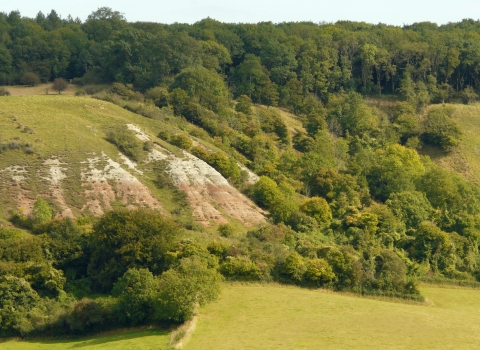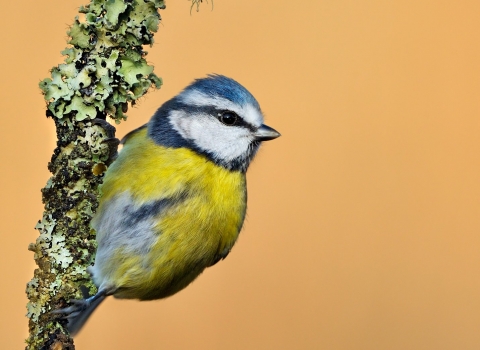
Dundon Beacon - Mark Green
Dundon Beacon
Location
Know before you go
Dogs
Visit the 'Dog walking on reserves' page in the Contact section for more information.
When to visit
Opening times
Open at all timesBest time to visit
April to AugustAbout the reserve
A mosaic of species-rich, unimproved calcareous grass downland, scrub, ancient oak woodland and secondary and conifer woodland on Dundon Hill.
In spring, the grassland on the hilltop is brightened by the mass flowering of yellow Cowslips. A number of orchids flower over the spring and summer, including Common Twayblades, Greater Butterfly Orchid and Pyramidal Orchids Adder’s Tongue Fern, an indicator of ancient grassland, can be found in the summer.
The hill slopes are largely wooded with areas of ancient Oak woodland with large Hazel and Field Maple. Sections of ground flora are dominated by Bluebells, while a small patch of Herb Paris can be found growing near the path. Areas of plantation woodland contain Conifers and Beech, which are being thinned to encourage regeneration of natural woodland. Common Dogwood, Blackthorn and Hawthorn dominate areas of scrub.
Badger setts occur and the site has a diverse invertebrate fauna with 28 species of butterfly recorded including Brown Argus and Brown Hairstreak. The Large Blue Butterfly has recently recolonised the reserve from adjacent release sites.
Much of the Dundon Hill woodlands on the slopes here is ancient Oak woodland with many large Hazel bushes and also Field Maple. Blackthorn, Hawthorn, Common Dogwood, Spindle, Wayfaring Tree and Brambles dominate the scrub. Sweet Briar also occurs. Early in the year large areas in the wood are dominated by Bluebells and the green flowered Dog’s Mercury. A wide range of fungi has been recorded including Amanita Solitaire, Inocybe Obscuroides and Tricholoma Chrysenteron.
The areas of planted conifers, mainly Corsican Pine, Larch and Scots Pine are subject to an ongoing programme of thinning and removal.
Reserve conservation management – The grassland is maintained by grazing with sheep, cattle and ponies and by rotational scrub cutting. Areas of hazel within the ancient woodland are coppiced on rotation. Non-native trees in the plantation woodland are gradually being thinned out to allow the regeneration of natural woodland.
History and Archaeology - The plateau on the top of the reserve is the site of an Iron Age hill fort enclosure, thought to date from around 700 BC. The ramparts, built as defensive structures, can still be clearly seen encircling the plateau. The outer earthworks of the fort enclose around 4.8ha (c. 12acres). This area is relatively flat at the centre but rises at its northern and southern ends. The fort includes various features including a possible Norman motte over a round barrow that dates to between the late Bronze Age and early Iron Age (8-5th Century BC). This mound is known as Dundon Beacon. The environs of the hill-fort may well contain below-ground archaeology relating to settlement and activity, as has been demonstrated at South Cadbury.
An archaeological excavation in the early 19th Century located a stone cist enclosing a kneeling skeleton. Below the body had been placed a “rudely-fashioned urn” containing penannular rings of more than ¾” diameter made of an oxidised white metal, probably tin. Urn fragments and one ring were given to Taunton Museum. Many flint fragments and tools were also found and these too are held by Taunton Museum.



